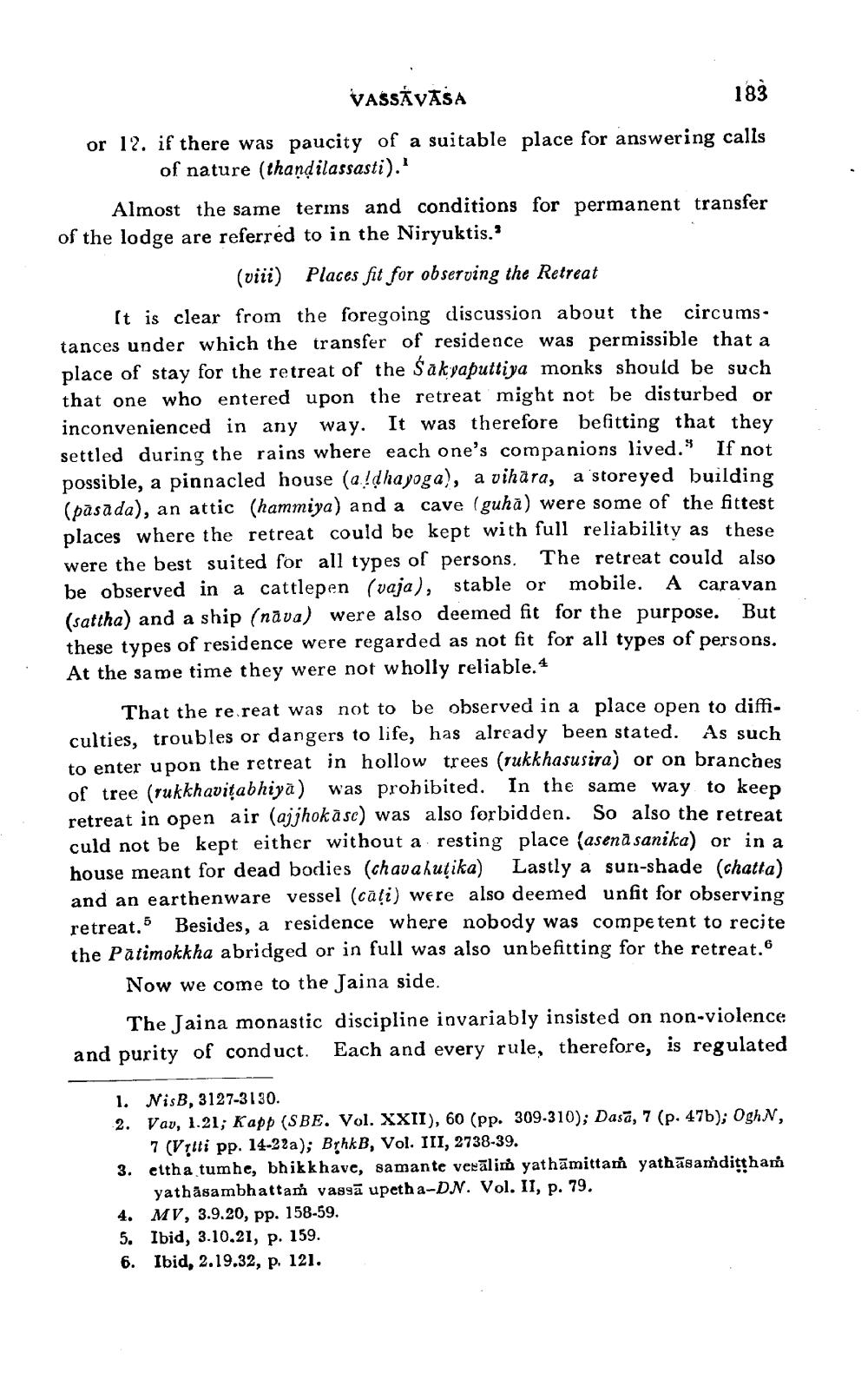________________
VASSÁVĀSA
183 or 12. if there was paucity of a suitable place for answering calls
of nature (thandilassasti).' Almost the same terms and conditions for permanent transfer of the lodge are referred to in the Niryuktis."
(viii) Places fit for observing the Retreat It is clear from the foregoing discussion about the circums. tances under which the transfer of residence was permissible that a place of stay for the retreat of the Śākyaputtiya monks should be such that one who entered upon the retreat might not be disturbed or inconvenienced in any way. It was therefore befitting that they settled during the rains where each one's companions lived." If not possible, a pinnacled house (a ! dhayoga), a vihara, a 'storeyed building (pasāda), an attic (hammiya) and a cave (guha) were some of the fittest places where the retreat could be kept with full reliability as these were the best suited for all types of persons. The retreat could also be observed in a cattlepen (vaja), stable or mobile. A caravan (sattha) and a ship (nāva) were also deemed fit for the purpose. But these types of residence were regarded as not fit for all types of persons. At the same time they were not wholly reliable. 4
That the re.reat was not to be observed in a place open to difficulties, troubles or dangers to life, has already been stated. As such to enter upon the retreat in hollow trees (rukkhasusira) or on branches of tree (rukkhavițabhiya) was prohibited. In the same way to keep retreat in open air (ajjhokā se) was also forbidden. So also the retreat culd not be kept either without a resting place (asenā sanika) or in a house meant for dead bodies (chavaluţika) Lastly a sun-shade (chatta) and an earthenware vessel (cāļi) were also deemed unfit for observing retreat.5 Besides, a residence where nobody was competent to recite the Patimokkha abridged or in full was also unbefitting for the retreat. 6
Now we come to the Jaina side.
The Jaina monastic discipline invariably insisted on non-violence and purity of conduct. Each and every rule, therefore, is regulated
1. NisB, 3127-3130. 2. Vav, 1.21; Kapp (SBE. Vol. XXII), 60 (pp. 309-310); Dasa, 7 (p. 47b); OghN,
7 (Vilti pp. 14-22a); BrhkB, Vol. III, 2738-39. 3. ettha tumhe, bhikkhave, samante vecālir) yathāmittam yathāsamdittham
yathasambhattaṁ vassā upetha-DN. Vol. II, p. 79. 4. MV, 3.9.20, pp. 158-59. 5. Ibid, 3.10.21, p. 159. 6. Ibid, 2.19.32, p. 121.




